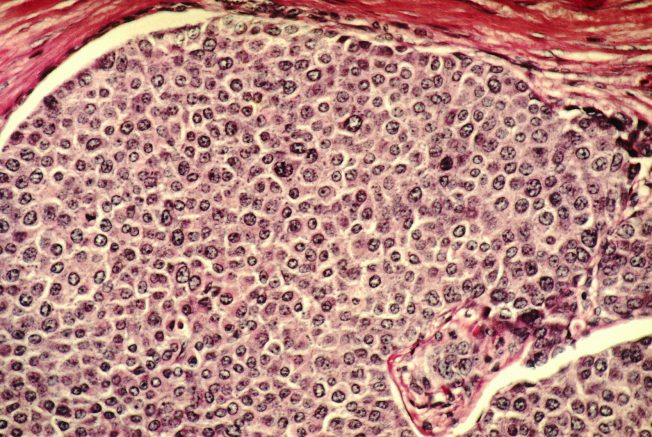Specific types of breast cancers
Pre-invasive breast cancer
When abnormal cells or cancer cells stay inside the milk ducts or milk sacs (lobules) of the breast.
Types of pre-invasive breast cancer are Ductal carcinoma in situ (DCIS) and lobular carcinoma in situ (LCIS)
Early breast cancer
EBC is cancer that is contained in the breast and may or may not have spread to the lymph nodes in the breast and armpit.
Locally advanced breast cancer
When the cancer has spread to one or more of the lymph nodes or other areas near the breast, or to tissues around the breast such as the skin, muscles or ribs, but there is no sign that it has spread to other parts of the body.
Paget’s disease
A rare form of breast cancer that begins in the milk ducts and spreads to the skin of the nipple and areola (the area around the nipple). This type of breast cancer is one reason why we emphasise the importance of looking for breast changes as well as feeling for them.
Inflammatory Breast Cancer (IBC)
A rare and rapidly growing type of breast cancer that causes the lymph vessels in the skin of the breast to become blocked, causing the breast to look swollen and red, or “inflamed”. It accounts for about 1 -2 % of the total number of women and men diagnosed with breast cancer.
Metastatic breast cancer
The terms metastatic, secondary, Stage IV and advanced are often used interchangeably. Secondary breast cancer is the term used to describe cancer that has spread from the original site in the breast to other organs or tissues in the body. The cancer may have spread to lymph nodes (not near the breast), the brain, liver, lungs or bones. For some women secondary breast cancer may be their first diagnosis of breast cancer. Although currently treatment for metastatic breast cancer is unable to get rid of the cancer completely, treatment can improve quality of life by reducing symptoms and controlling the spread of the cancer.
Men with breast cancer
Breast cancer in men is rare. Less than 1% of all people diagnosed with breast cancer are men.
Both men and women have breast tissue. As with women, we don’t know exactly why breast cancer develops in men. We do know that there are risk factors that may increase a man’s risk of developing breast cancer.
The most common risk factors for men are:
- Getting older ( breast cancer in men occurs more commonly in those aged 50 and older)
- Having a strong family history of female or male breast cancer
Less common risks are:
- Having high oestrogen levels
- Klinefelter’s syndrome
Some studies suggest that there may be a link between male breast cancer and some testicular disorders, and exposure to radiation.
Email us
Request a Call Back

